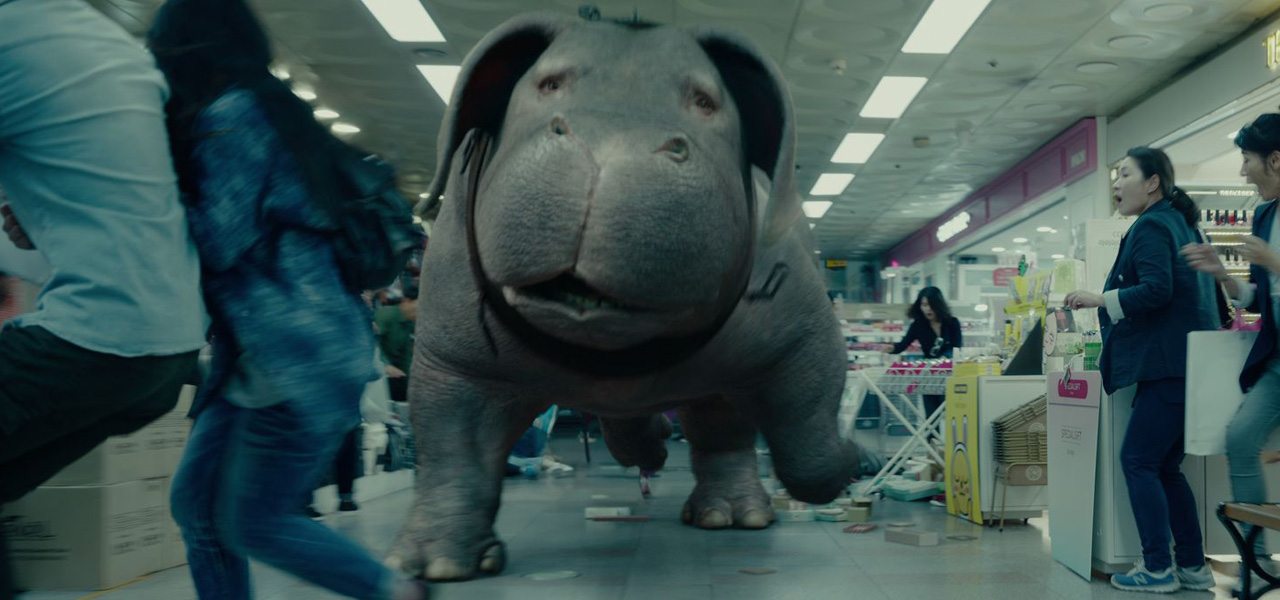
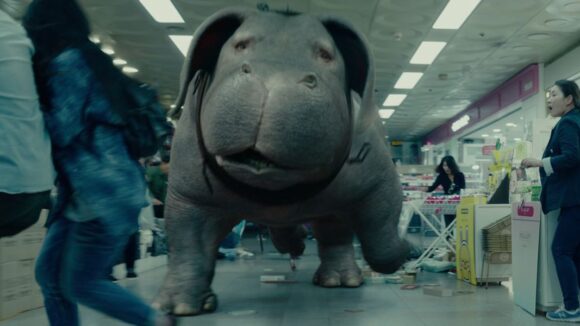
‘Okja’: Finding the Personality Of A CG Super-Pig
Visual effects studios are perhaps now extremely well-versed in inserting cg creatures into live-action plates. Indeed, that’s something Method Studios was tasked with for Bong Joon-ho’s Okja, which is currently streaming on Netflix and tells the story of an animal genetically modified for food and befriended by a young girl.
But crafting the ‘super-pig,’ called Okja, was something Method’s visual effects supervisor, Erik De Boer – who won an Oscar for his work at Rhythm & Hues on Life of Pi – wanted to approach differently than your typical computer generated character.
That fresh approach involved a very meticulous approach to puppeteering stand-ins for Okja on set and finding a unique personality for the cg creature. De Boer spoke to Cartoon Brew just after the New York premiere of the film to break down the work behind the scenes.
The on-set performance
In the film, the young girl, Mija (Ahn Seo-hyun), goes on the run with Okja as they try to evade the clutches of the Mirando Corporation. Seo-hyun acted many scenes in the film with just a puppeteered foam version of Okja in the scenes, or against nothing at all. Knowing they would be working with a child actor, De Boer wanted to improve the visual effects team’s on-set presence by making Seo-hyun as comfortable as possible in delivering her performance.
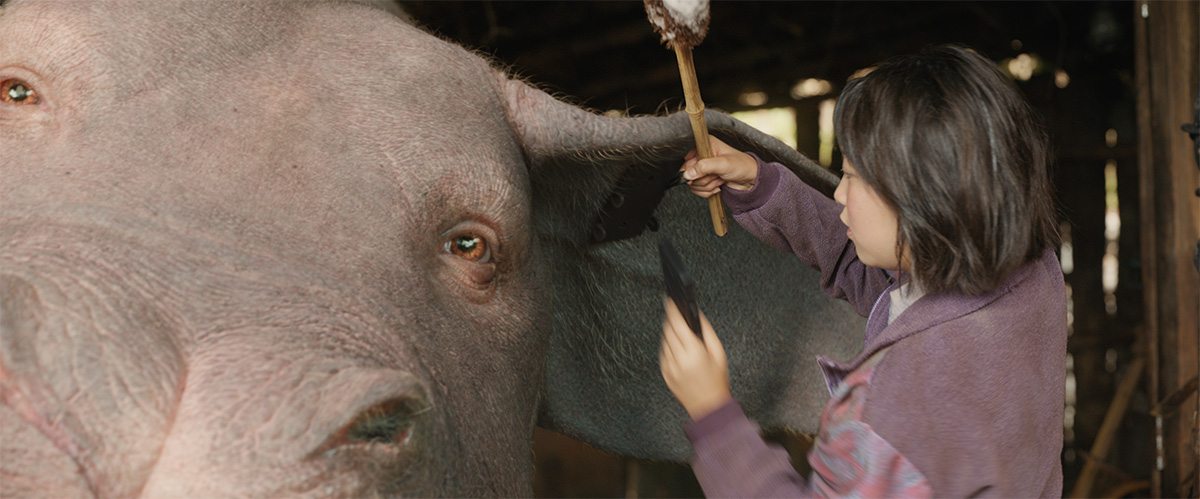
“It was about making sure that she trusted us that we stayed in character, that we rehearsed everything, that she understood what Okja was feeling and doing,” said De Boer. “I also made sure that the guy that was puppeteering the puppet was always the same guy and that she had a good relationship with him so that there was mutual trust and friendship there. That made it easier for her to connect with the foam that he was holding.”
The foam version of Okja was, itself, also carefully thought out. Method had already built the creature model and done motion tests prior to shooting, and this was used directly to build on-set props for puppeteering and interaction. Special effects vendor Cell in South Korea handled that work, using the models to laser cut large sheets of foam and gluing them together into a 3d shape that would match the actual size of the cg Okja.

“We asked them to build like parts of the neck, parts of the butt and flank, and several versions of the head,” said De Boer. “Some of the heads were light so we could quickly run around with them, but we also had versions that were a lot heavier and thicker, one called the push-pull rig, so that we could really get the right weight and the proper physicality and interaction.”
The cg performance
Despite its super-pig description, Okja somewhat resembles a hippopotamus. So that’s what Method looked to for motion and muscular reference, along with elephants. Manatees were also referenced for their skin qualities. But for personality, De Boer says Joon-ho suggested canine behavior.
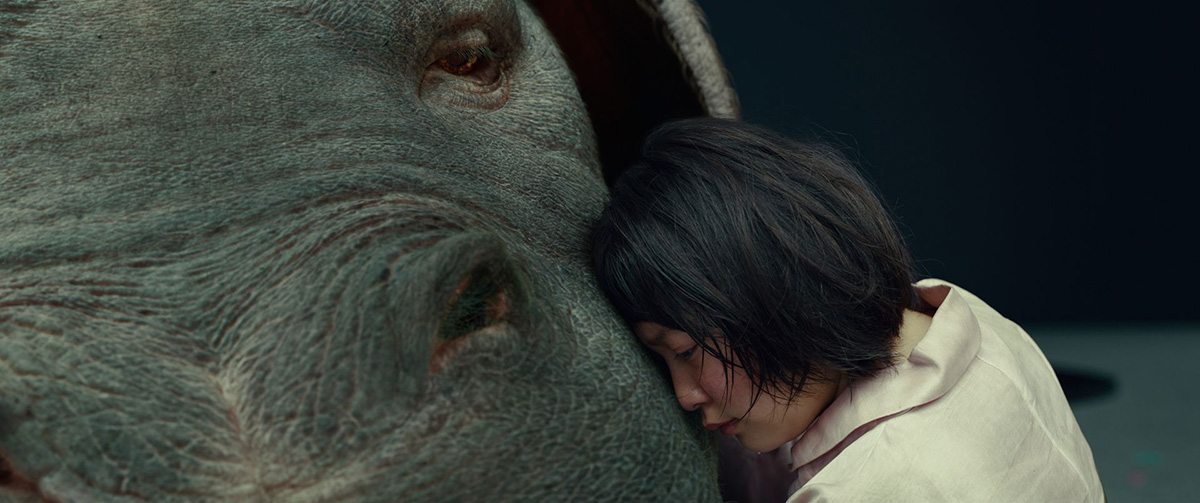
“It ended up mainly being a Labrador and beagle that we referenced for Okja’s personality and that’s the level that I reminded the animators of to get inspired by. Actually, we referred to Okja as a ‘piggo’ just to remind ourselves that we were sourcing several animals that exist in nature.”
The creature’s eyes would prove to be one of Okja’s characteristics that most sold its personality. De Boer retained an animalistic look for the eyes, although not from a hippo or pig. Instead, the look of dog eyes, which have little ‘pillows’ above them, helped add some expressiveness into Okja. It was just enough, notes the visual effects supervisor, to let audiences “really fall in love with our huge pile of pork.”
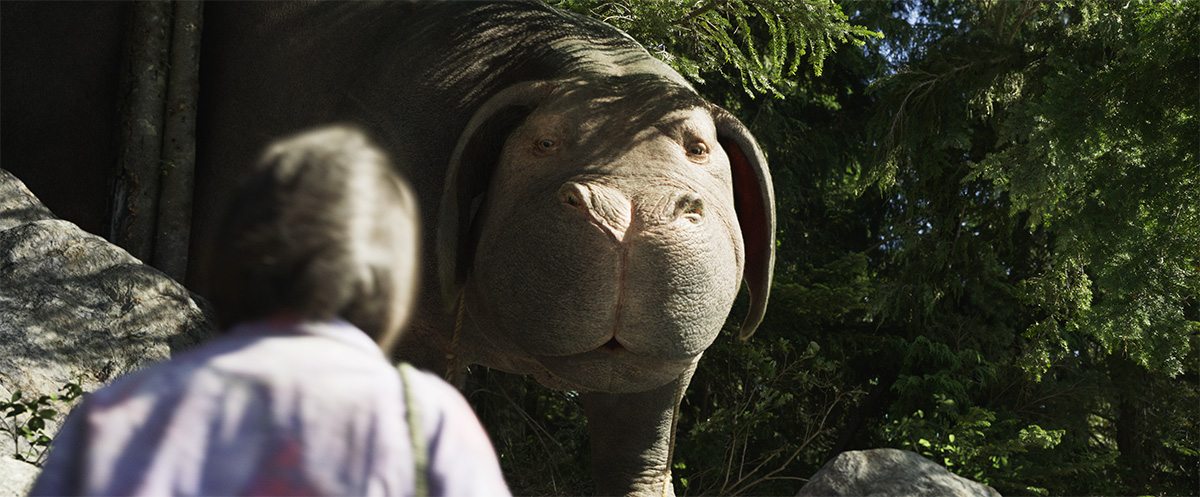
Okja is seen in both forest and city environments in the film. Amongst buildings and traffic, the creature was of course played as much more ‘fish out of water’ and nervous and struggling in these surroundings. She slips on tiles, for example, and does not want to go down stairs.
For some of the more frenetic scenes, the animation team at Method Studios, led by animation supervisor Stephen Clee, had to experiment with how fast Okja could run. Initially the speed was determined to be not terribly fast, but after shooting some test footage of an SUV in Vancouver and having the cg character run alongside it, Okja’s galloping ability was increased.
Taking on the tunnel
One scene in particular, the tunnel sequence, made use of both on-set stunts and Method’s meticulous visual effects. In it, Mija and Okja are racing away from representatives from the Mirando Corporation in and around heavy traffic. Ultimately, Mija makes a getaway with a dramatic flip onto Okja’s back.
During shooting, Cell collaborated with the filmmakers on a suitable rig for Seo-hyun to ride on as a substitute for the cg creature. “Originally, the idea of an elaborate bicycle rig that we would push through the tunnel and ride Seo-hyun on was imagined,” said De Boer. “But that was quickly abandoned because it turned out to be just too restrictive. It was going to be really hard just to get the right speed into it and then control the cadence and keep Ahn safe while we were doing that.”
“We didn’t want to go with the stunt double because you can see Mija’s face quite clearly,” added De Boer. “I also didn’t want to go with your typical motion-based solution – we just wouldn’t get enough percussiveness out of that solution. I really wanted to make sure that Mija was bouncing around and riding Okja properly and that we could be improvising with the cadence and get some real strong overlap into her skin, into her clothing, and into her hair.”
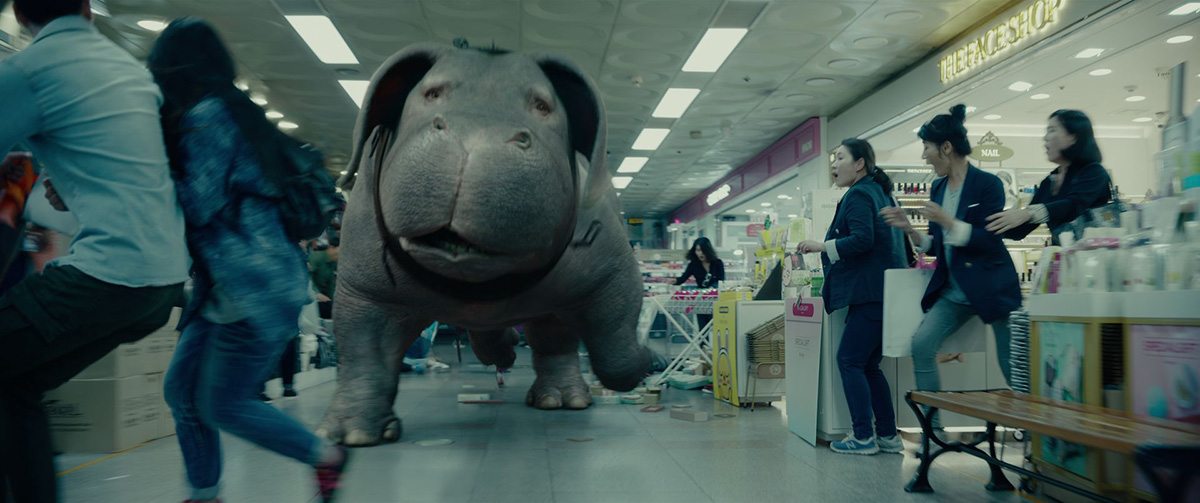
The solution would be found in what De Boer describes as a ‘big pogo stick.’ It was positioned on a base that could be turned left and right and laterally. And it was also bounced up and down and puppeteered as if it were the hippo-like Okja creature.
The riding scenes, in particular, were greenscreen shots. “We rehearsed that with Seo-hyun in the weeks prior during the shoot,” said De Boer. “She was really comfortable and, actually, was looking forward to riding that rig.”
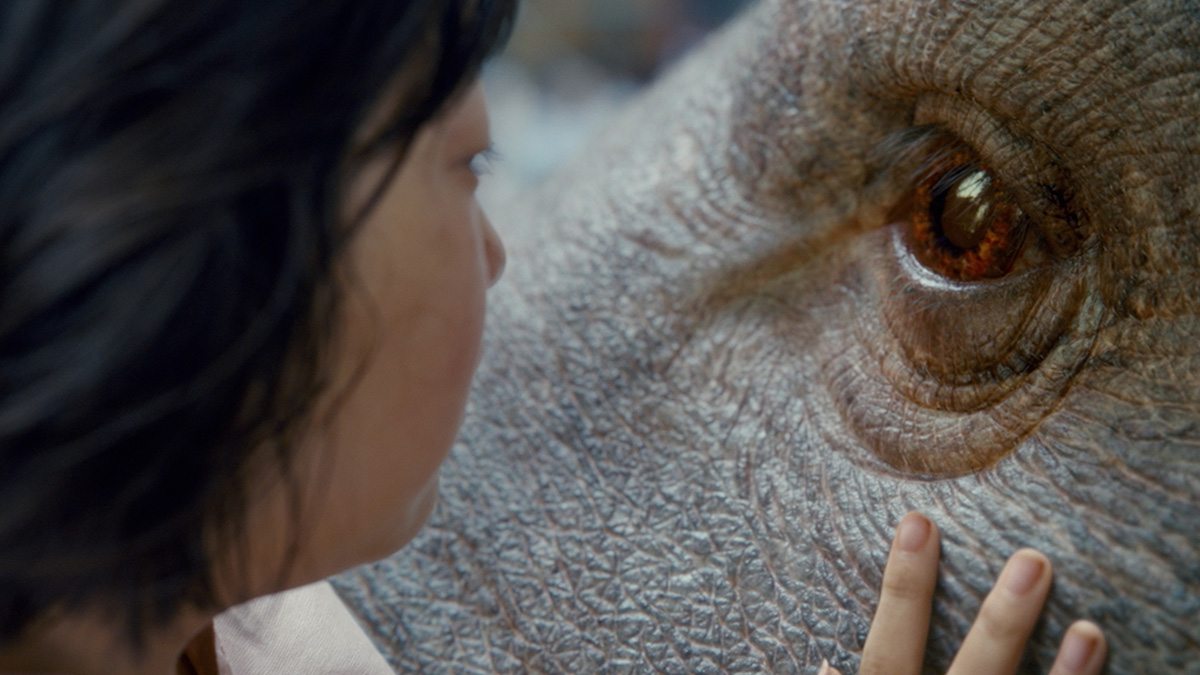
Plates were also filmed in an actual tunnel with real traffic. It’s inside the tunnel that Okja performs a radical flip – a move choreographed by Method Studios, which also introduced cg cars for the character to bump into. On set, Clee, the animation supervisor, would act out the movements of Okja. He also coordinated the action for the scene of Mija landing on Okja’s back – a scene that made use of a digi-double.
“He’d be throwing his arms up, which then directs the camera to follow Mija flying up towards the ceiling and then coming down again,” related De Boer. “We had, I think, only a half an hour or less to shoot that specific place before the police would open the tunnel again for traffic for the night rush hour. So it was a big rush.”
Ultimately, Method Studios aimed to produce a character that didn’t feel out of place, despite its unusual proportions. De Boer says the director, who has had his fair share of visual effects experience on films such as The Host and Snowpiercer, knew how to help make that happen.
“Joon-ho gave me a lot of freedom to dial-in the performance, the way that we felt was good, which meant that after his initial feedback we had a lot of trust and security.”

.png)